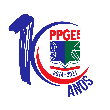Banca de QUALIFICAÇÃO: DANIELA FIGUEIRA ALANO
Uma banca de QUALIFICAÇÃO de MESTRADO foi cadastrada pelo programa.STUDENT : DANIELA FIGUEIRA ALANO
DATE: 26/10/2021
TIME: 15:00
LOCAL: Google Meet
TITLE:
LANGUAGE EDUCATION AND INTERCULTURALITY: A DIAGNOSIS OF THE MUNICIPALITY OF ORIXIMINÁ-PA
KEY WORDS:
Plurilingualism. Sociolinguistic Diagnosis. Teaching Practices. language education
PAGES: 74
BIG AREA: Lingüística, Letras e Artes
AREA: Lingüística
SUMMARY:
This research will focus on the theme linguistic education in a plurilingual context in the hope of diagnosing the sociolinguistic profile of students from public school(s) in the city of Oriximiná-PA. The general objective of this work is to investigate whether the teaching practices of Portuguese language teachers consider the sociolinguistic profile of students. The western region of Pará is not different from other regions of the country that have both allochthonous and autochthonous languages. Indigenous languages are very present in Brazil. According to the Brazilian Institute of Geography and Statistics – IBGE, the country is home to 305 indigenous peoples and 274 native languages. In the state of Pará there are about 25 indigenous languages from three linguistic branches (Macro-Jê, Tupi and the Karib family). In the municipality of Oriximiná-PA, there is a complex formed by 18 villages, where approximately 2086 indigenous people from the Wai-Wai, Hiskaryana, Tunayana, Katuena, Tiriyó, Xereu, Manawana and Kaxuyana ethnic groups live. The Mapuera village is the largest with 1300 indigenous people of the Wai-wai ethnicity and language. Such a diverse reality impacts language teaching. Many of these indigenous people become public school students. But the teacher is not always aware of the origin of these students. Therefore, it is necessary to carry out a sociolinguistic diagnosis based on the application of questionnaires, through which it will be possible to draw the profile of students from public schools in the city of Oriximiná in a context of plurilingualism so that, given the linguistic situation presented, we try to understand if and how the teacher has considered plurilingualism in the practice of teaching the Portuguese language. After this diagnosis, it would be possible to propose strategies to work the theme in public schools.
BANKING MEMBERS:
Presidente - 1260786 - EDIENE PENA FERREIRA
Interno - 1292601 - ZAIR HENRIQUE SANTOS
Externo à Instituição - RAIMUNDO NONATO DE PÁDUA CÂNCIO - UFT




